Casual gaming is booming, and it’s not just a niche market anymore. The casual gaming audience has grown massively in recent years, encompassing people of all ages and backgrounds unified by their love for fun, easily accessible gaming experiences.
Just look at the mind-blowing statistics – the global casual gaming market was valued at over $20 billion in 2022 and is projected to grow at a compound annual rate of nearly 15% through 2027. With numbers like that, it’s no wonder major game studios and indie developers alike are clamoring to get a piece of the casual gaming pie.
But here’s the kicker – casual gamers are a unique breed. They have different motivations, behaviors, and preferences compared to hardcore gamers. Trying to market a casual game the same way you would a hardcore title is a surefire way to flop. That’s why understanding this audience inside and out is mission-critical for any game marketer.
The purpose of this guide is to provide a comprehensive playbook for effectively marketing casual games. We’ll dive deep into the casual gamer psyche, unpack proven marketing strategies tailored specifically for this segment, and reveal insights to help your game stand out in an increasingly crowded market. Buckle up, it’s going to be a wild ride!


Need Game Art Services?
Visit our Game Art Service page to see how we can help bring your ideas to life!
Understanding Casual Players
Before we get into specific tactics, we need to really understand who casual gamers are and what makes them tick. It’s the difference between shooting blindfolded and having laser-focused targeting.
Defining Casual Gamers
So what exactly qualifies someone as a “casual” gamer versus a hardcore or mid-core player? The simplest definition is that casual gamers play games for pure entertainment and stress relief rather than as a competitive hobby or deep-seated passion.
Casual games are designed to be picked up and played in short bursts whenever the player has a few spare moments – waiting in line, commuting, waiting for an appointment, etc. The gameplay is easy to learn but difficult to fully master, providing an enjoyable challenge without being too complex or demanding. Casual gamers aren’t necessarily casual about gaming in terms of frequency or time spent. Many play daily or for extended periods. It’s more about their motivations and the types of games they gravitate towards.
Preferences and Behaviors
While not a monolith, casual gamers do share some common traits and preferences. They overwhelmingly favor mobile gaming on smartphones and tablets due to its portability and convenience. But they also play a fair amount on PCs during work breaks or while multitasking at home.
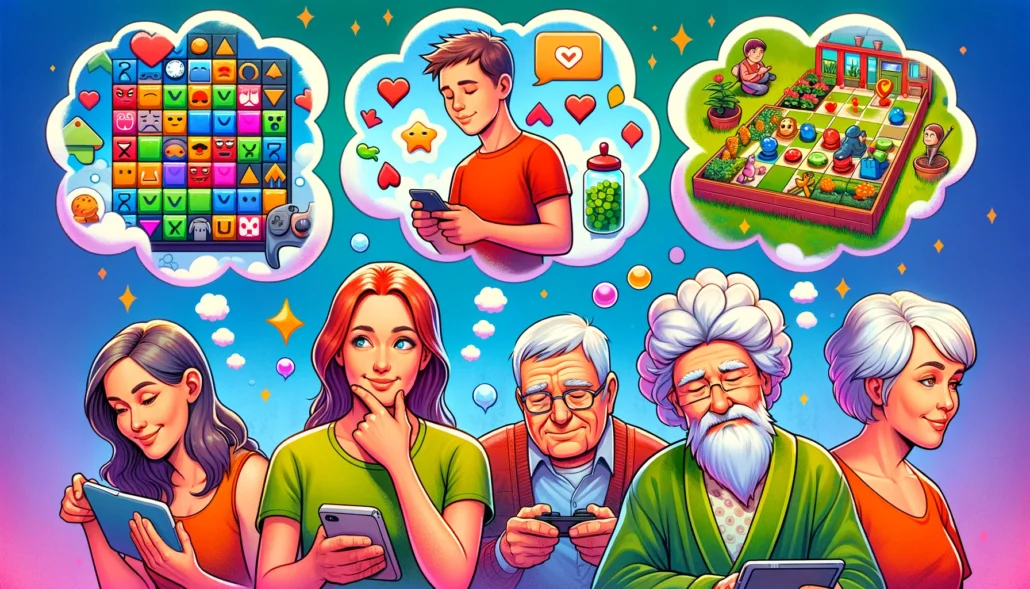
The game genres that dominate in the casual space are puzzle, match-3, hidden object, casual simulation/tycoon/building games, and simple casual card/board games. Games like Candy Crush Saga, Gardenscapes, Minecraft, and Words With Friends are among the most popular. Casual players are drawn to games with simple, intuitive mechanics that require no lengthy tutorials and can be picked up in a few minutes. They still want an engaging challenge, but not something so hardcore it feels like work.
There’s also a strong preference for game themes and narratives centered around calming activities, beautiful settings, familiar concepts, light puzzle-solving, world-building, and storytelling rather than intense action, combat, or galactic sci-fi epics. A key behavior is the willingness of many casual players to spend moderate amounts on in-app purchases, subscriptions, or expansion content for their favorite games to enhance and extend the experience.
Key Marketing Strategies
Now that we understand the casual gamer mindset, we can explore key strategies to grab their attention and keep them engaged. It’s all about meeting them where they are.
Accessible Game Design
The overall game design and user experience are arguably the most important marketing tool for attracting casual players. Striking the right balance between simple accessibility and layered depth is crucial. The initial game onboarding absolutely must be intuitive enough for complete novices to immediately understand the core gameplay loop with little to no hand-holding. No intense tutorial levels or walls of text exposition here!
But the game also needs to have enough ramp-up in difficulty and new gameplay wrinkles over time to prevent veteran players from hitting a skill ceiling and losing interest. Candy Crush Saga is a prime example of a game that’s invitingly easy to start but masters the art of injecting new challenges and unlocks to maintain engagement. When it comes to things like menus, settings, and in-game economies, the name of the game is minimalism and usability over mind-boggling depth and complexity. If it feels convoluted, casual players will bounce.
Effective Messaging
The language, visuals, and overall tone used in your marketing need to vibe with the casual gaming mindset. Instead of hyping intense competition or mastering deep gameplay systems, highlight how your game provides bite-sized moments of delightful escapism, brain-teasing fun, and satisfying progression.
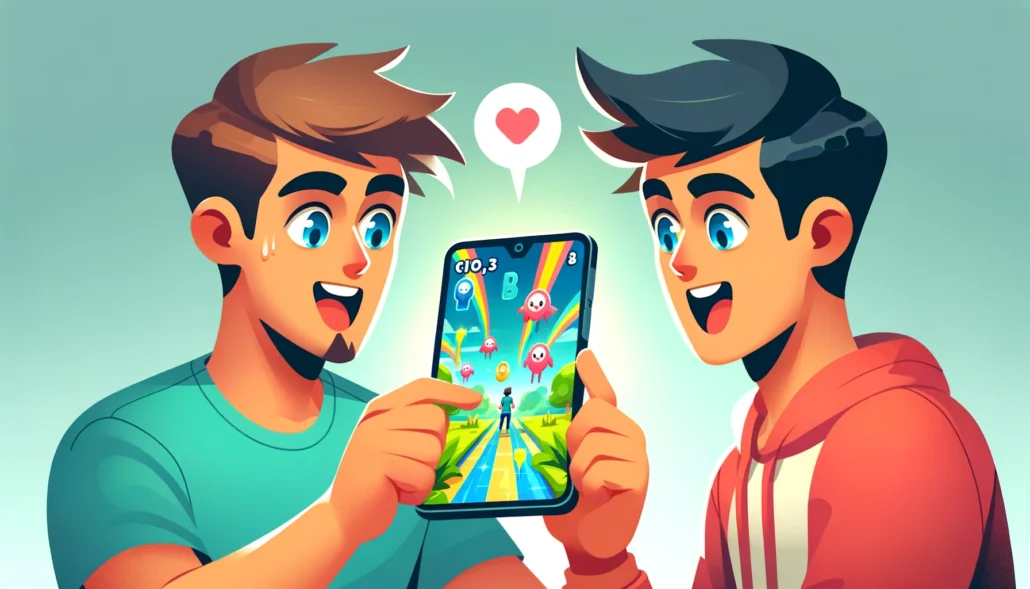
Imagery should evoke feelings of relaxation, beauty, lightheartedness, and playfulness rather than bombast and sensory overload. Focus on the charming characters, vivid environments, rewarding surprises, and of course the “just one more round” addictiveness enabled by quick session play. Study how wildly successful games like Pokemon Go and the multitude of match-3/puzzle games convey simple, joyful enjoyment. Their messaging reassures casual players that the game will fit seamlessly into their lives without demanding too much time, energy, or skill.
Visual and Functional Appeal
Casual gamers are drawn to experiences that are as smooth, intuitive, and aesthetically pleasing as the latest mobile apps and software platforms they use daily. From a visual standpoint, that means vibrant colors, stylized yet pleasing character/environment art, clean modern UI design, buttery smooth animations, and satisfying feedback cues like celebratory effects and audio. Take cues from trendy mobile game hits like the Coin Master universe or the graphical richness of the Pokemon franchise.
But an often underappreciated factor is prioritizing streamlined functionality and control schemes that complement mobile ergonomics. On-screen buttons and gesture controls need to be intelligently positioned for intuitive thumb mobility. Or for games utilizing more traditional controls, they have to be adapted in a way that avoids frustration or cramped play sessions. Achieving this level of visual and functional excellence isn’t a nice-to-have – it’s table stakes in the polished world of casual games. If the look and feel aren’t plasma smooth, it will negatively impact retention.
While it’s not specifically about casual games, I recently made a list of games with unique art styles that could be inspiring for you if you’re starting a new game project.
Channels for Reaching Casual Gamers
With the right game concept and marketing foundation in place, the next critical piece of the puzzle is selecting the ideal channels to reach casual gamers where they live.
Social Media Marketing
Love it or hate it, social media marketing is an absolute must in the casual gaming arena. Facebook, Instagram, TikTok, Snapchat – casual gamers live and breathe on these omnipresent platforms. Social ads and influencer collaborations allow you to insert your game directly into the feeds and curated spaces where casual gamers are most engaged. It supercharges discoverability and sparks viral, word-of-mouth growth.
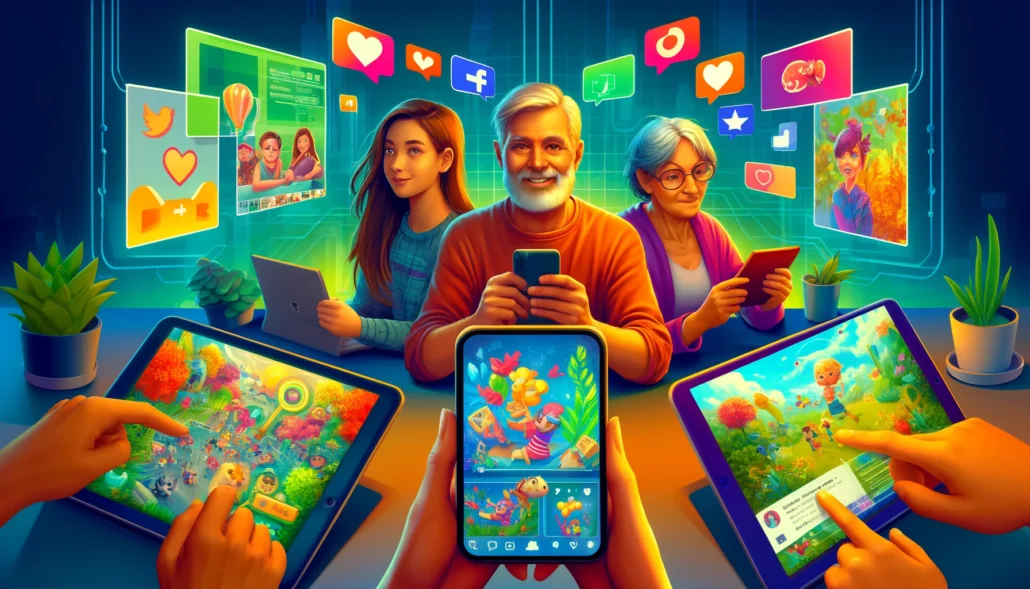
The key is developing hypercasual social content that hooks casual gamers’ innate curiosity and aligns with the snackable nature of social consumption. Short gameplay clips, whimsical animations, memes, relatable humor, community engagement, contests, and fun interactive elements are all part of the mix.
But in the world of short attention spans, you have to make every piece of social content an irresistible bite that leaves them craving the full experience. That’s how smash hits like Wordle exploded across platforms.
Competitive Social Mechanics in Casual Context
A lot of casual games have social stuff, like leaderboards and challenges where you can compete with your friends. It’s what keeps people coming back. It’s fun to compete, and it also builds this community feeling around the game.
Competing with Friends
Gaming used to be just about beating the game. Now, it’s different. Lots of games have social stuff. You can compete with your friends on a leaderboard, or challenge them. It makes the game way more social and fun.
The best part is, it gives you a reason to keep playing. You don’t just want to beat your old score. You want to beat your friend’s score too. That small competition keeps people coming back for more.
Influencer Collaborations
Speaking of explosions, the phenomenon of mega-influencers singlehandedly propelling games to stratospheric success has become commonplace, especially in the casual mobile space. By partnering with influencers who have built large, rabidly engaged followings, you can inject your game directly into their followers’ feeds with perceived authenticity and social proof. It kickstarts that all-important word-of-mouth buzz among your precise target audience. But not all influencer collabs are created equal.
The key is identifying influencers who are intrinsically aligned with your specific game’s theme, tone, and audience. A trendy gamer influencer may not be the best fit for a laid-back hidden object game popular with middle-aged casual players. Top-performing partnerships keep things natural by enabling influencers to showcase your game genuinely through their own unique content and play style rather than feeling like overly sanitized ad reads.
Community Engagement
Embracing user-generated content is also huge for casual games. Encourage players to share screenshots, video clips, fan art, level codes, and more by making it easy and highlighting top fan works. This activates their creativity and sense of ownership over the experience.
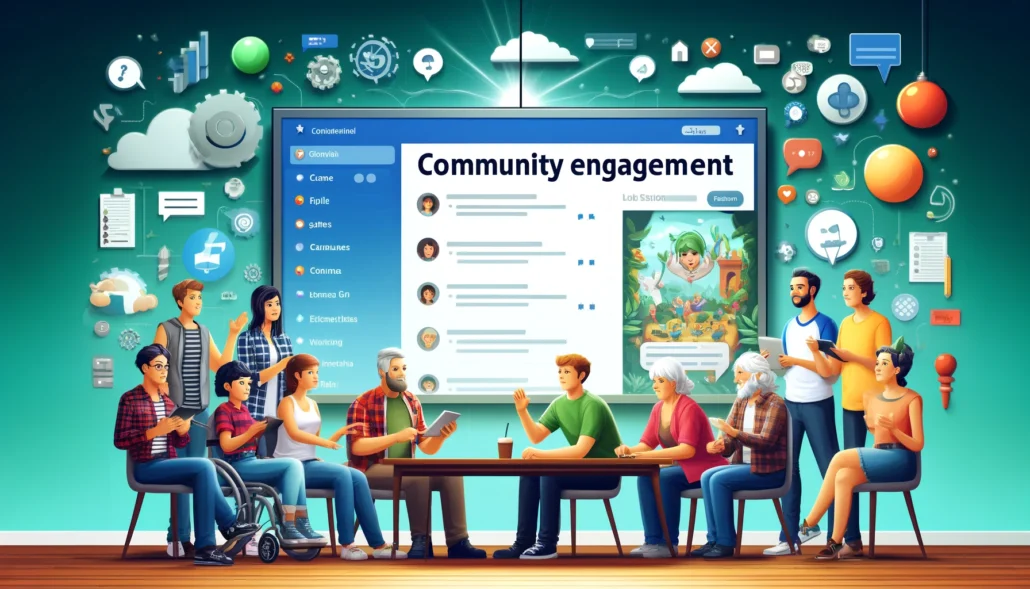
Live streaming has become a cornerstone of many top casual game communities as well. Developers streaming play sessions, sneak peeks at upcoming content, AMAs, and design discussions captivate players and galvanize communities around mutual passion points.
The holy grail is achieving a self-sustaining level of community engagement where players are consistently producing awesome derivative works, helping find solutions for one another, and recruiting their friends and family to join the fun.
For casual games built for longevity and retention, fostering a vibrant player community is a significant advantage. It drives word of mouth, extends engagement levels, and forges strong bonds between players and the game/brand. Start by cultivating official social hubs like Facebook Groups, Discord servers, forums, etc. where players can congregate, discuss the game, share fan creations, get support, and engage directly with developers. Be responsive, nurture productive discussion, and incentivize community activities through contests and rewards.
Rise of Hybrid-Casual & Merge Mechanics
The casual games scene is changing a lot. They’re starting to mix simple gameplay with a little more depth, making them “hybrid-casual.” A great example is all the merge games out there. You still get that easy, satisfying gameplay, but you also have a bigger goal to work toward. This keeps people playing for way longer and makes them more attached to the game.
You know those games where you just tap the screen to do one simple thing, like chop wood? It’s so easy and kind of relaxing when you have a minute. That’s the simple part.
But what if you could take all that wood you collected and start combining it with other things you find, like stone? You could merge a few pieces of wood and stone to build a little house. And get this: you could even combine those small houses to create something much bigger, like a bakery for your town.
That’s the whole point of a hybrid game. You still get that easy, satisfying tapping action, but now you’ve got a much bigger purpose. Instead of just collecting stuff, you’re actually building a whole world, and that’s what keeps you hooked for hours.
Advertising Techniques
With casual games so reliant on constant content discovery and word-of-mouth growth, nailing the advertising strategy is mission-critical. Let’s look at some of the most effective advertising techniques for the casual gaming crowd.
Ad Formats
Certain ad formats simply resonate better with casual gamers than others. In general, casual players respond well to ads that bring a piece of the gameplay experience directly to them in an easily digestible format.
Video ads showcasing short gameplay clips are extremely effective in piquing interest. Rewarded ads that provide players with bonuses like extra lives or resources in exchange for viewing ads tend to have great engagement. And playable ads that drop players right into a demo slice of the actual game experience can drive serious conversion rates.
Banner ads and static ads without any gameplay integration tend to be largely ignored by casual players. In the mobile gaming environment, intrusive interstitial ads that interrupt the flow too frequently can be a surefire way to erode retention and goodwill. As with many things casual gaming, it’s about striking the right balanced approach.
Psychology of Advertising
Successful casual game advertising comes down to activating the core psychological forces that attract and sustain casual players in the first place: novelty, whimsical delight, relaxation, productivity, learning, and achievement. Great ads spark curiosity by showcasing brief peeks at fresh gameplay twists, surprising moments of delight, and rewarding progression. They give the impression of a charming yet challenging escape from reality’s stresses without feeling like empty-calorie entertainment.
The use of reward incentives like bonuses, special unlocks, and sneak previews in ads can also be particularly powerful motivators for casual gamers constantly seeking new gratification loops. Basically, ads need to demonstrate how this specific game is a fresh new bundle of dopamine-releasing fun for the casual play mindset.
A/B Testing
Given the sheer quantity of ad spend and volume of testing required to pinpoint peak creative and targeting, embracing constant A/B testing and optimization is table stakes.
By rapidly iterating ads across different platforms, creative approaches, messaging hooks, gameplay snippets, incentives, and audience targeting parameters, patterns will emerge that reveal the true highest-performing setups.
Game developers and casual game publishers must be scientifically rigorous about their A/B testing cadences and data analysis. Many will invest in comprehensive ad attribution solutions to accurately assess ad performance and incrementality across a complex mix of channels, creatives, and cohorts to continually dial things in.
The best in the business treat advertising optimization as an ever-evolving process, not a set-it-and-forget-it tactic. By constantly refreshing their ad strategies based on evolving data and trends, they avoid ad fatigue and retain their edge.
Monetization Strategies: Balancing Ads, IAP & Subscriptions
Making money from casual games is all about finding a good balance. Most people just expect the games to be free, so showing ads is a big part of that. But you also have to have good ways for players to spend money, either with in-game items or a subscription. The whole point is to have a good mix so players feel like they have a choice and it doesn’t feel like you’re forcing them to pay.
The Value of In-App Purchases (IAP)
IAPs are there for the players who want to spend money on things like new items, power-ups, or cosmetic changes. They let you offer more value to paying players and give them a way to customize their experience.
Offering Subscriptions
Subscriptions are a good option for your most dedicated players. They provide special perks and benefits over a set period, offering a more premium experience for a recurring fee.
Case Studies
To provide some real-world context for these strategies in action, let’s examine a couple of compact case studies illustrating both soaring successes and stumbles in casual game marketing.
Successful Campaigns: Pokemon Go
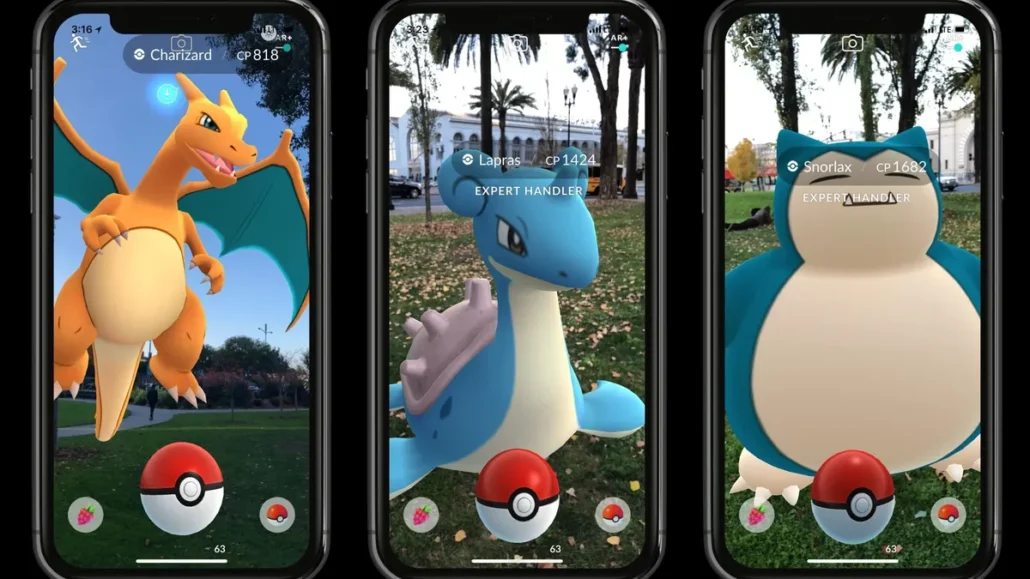
Few casual game launches were as explosively successful as Pokemon Go‘s 2016 debut. Leveraging the multigenerational global popularity of the Pokemon IP, Niantic supercharged mainstream ubiquity with a first-of-its-kind augmented reality mobile experience encouraging outdoor social exploration.
Their genius marketing strategy involved:
- Releasing an outrageously viral beta in select launch markets to trigger frenzied interest
- Adeptly channeling influences and driving meme/hashtag craze across social media to energize fandoms
- Taking over public parks, plazas, and landmarks as AR experience hubs to create real-world foot traffic and news headlines
- Constantly refreshing gameplay with thematic events and new features to sustain engagement
The result was a genuine cultural phenomenon that onboarded tens of millions of new and lapsed casual gamers worldwide into a flagship franchise.
Lessons Learned: SimCity Social & Pitfalls of Over-Monetization
Not every foray into marketing casual games has been victorious though. One infamous misfire was the much-maligned Facebook game SimCity Social, which failed to meet high expectations for publisher EA.
The simulation/building game itself had an appealing, casual-friendly concept and clean execution. But players revolted over what they perceived as endless nickel-and-diming through endless pay gates, waiting timers, and incessant prompts to purchase premium currencies.
Player retention plummeted as the rampant over-monetization sapped the fun out of the experience. The aggressive tactic ran headlong into casual gamers’ general unwillingness to endure excessive microtransaction models and deterred social network sharing/virality.
While valuable lessons in finding the right monetization balance, SimCity Social’s missteps illustrated how crucial it is not to betray the core tenets of casual gameplay – accessibility, intuitive progression, and an uninterrupted “casual” flow state.
Emerging Trends and Future Outlook
The casual gaming space is constantly evolving alongside new technologies, cultural shifts, and dynamic audience behaviors. Staying ahead of the curve on emerging trends will be vital for effective future marketing strategies.
Technological Advancements

Most industry watchers agree that extended reality experiences (XR) encompassing augmented reality (AR), virtual reality (VR), and mixed reality (MR) will unlock new frontiers for casual gaming engagement. Early hits like Pokemon Go demonstrated the mainstream appeal of AR’s ability to blend the digital and physical worlds.
Going forward, expect an explosion of new location-based and multiplayer AR gaming injecting surprise, spontaneity, and social connections into everyday environments. Affordable XR headsets and smart glasses could also democratize immersive casual gaming for at-home audiences.
Meanwhile, generative AI technology might start dynamically personalizing casual gameplay experiences and marketing content to individual players’ preferences and contexts in fascinating new ways we can’t yet imagine.
Cloud gaming services have already taken steps toward eliminating historical hardware requirements and making premium casual games widely accessible across devices. 5G networks and edge computing could soon enable even more seamless, high-fidelity casual streaming.
Market Predictions
As emerging technologies reshape how we interact with games and media, the casual gaming audience itself is also evolving rapidly in size, demographics, and platform preferences.
Current projections indicate the global casual gaming market will swell past $120 billion by 2028, propelled by growth across mobile, PC, XR, and cloud channels. Younger generations weaned on smartphone gaming are expected to drive sustained engagement and spending as they age into their peak earnings years.
Meanwhile, historically underrepresented demographics like the 45+ age bracket are rapidly joining the casual gaming ranks. As older users become more tech-savvy and gaming holds greater social currency, casual titles tailored to older adults’ interests should see massive upside.
On the platform front, while smartphones will remain the default casual gaming device, slouching toward a “metaverse” of interconnected virtual worlds navigated via VR/AR devices could upend the status quo. Early crypto games embracing player-ownership economies may foreshadow coming Web3 models for casual content as well.
In any case, the escalating mainstream proliferation of casual gaming as go-to entertainment seems indisputable. Savvy brands able to evolve their offerings and marketing strategies in parallel stand to reap massive windfalls in the years ahead.
Gen‑Z Design & Demographic Dynamics
When you’re making a game for Gen-Z, you have to remember they have a million other things to play. So they want stuff that’s fast and easy to get into. They hate long tutorials and want to feel good about the game right away. And this group really likes games that feel real and have a good community. They don’t like things that look too corporate, so the design has to feel authentic and bring people together.
Summary of Key Lessons
Throughout this deep dive into effectively marketing games to casual players, we unpacked a number of core principles:
- Truly understanding the unique motivations, preferences, behaviors, and psychologies that define the casual gaming audience is foundational
- Success demands specially tailored game design, messaging, visuals/functionality, and overall user experiences optimized for the casual player mindset
- Leveraging social media, influencers, and robust community-building strategies is vital for organic discovery and sustainable engagement
- Thoughtful advertising creative, formats like playable ads, incentive models, and constant multivariate testing are essential marketing pillars
- Achieving the right balanced monetization approach through emergent models like freemium, subscriptions and rewarded ads is pivotal
- Staying ahead of technological curve balls like XR, generative AI, and cloud gaming will separate future winners from laggards
Final Thoughts
The casual gaming audience has emerged as one of the most powerful entertainment forces reshaping media and technology. Their sheer numbers, receptiveness to new experiences, and collective spending power are staggering.
Those who dedicate themselves to understanding, respecting, and catering to the unique casual gaming psyche will be uniquely positioned to forge lasting connections with this audience. While the road isn’t easy, the potential rewards for getting casual marketing right are exponentially growing each year.
Bust out the kickstands, forget about the esports arenas, and lean into creating delightfully bite-sized pockets of play and whimsy tailored for life’s fleeting chill moments. That’s how you’ll win the hearts, mindshare, and dollars of the casual gaming multitudes.
Additional Resources
For those eager to dive even deeper, consider exploring the following resources:
Further Reading
- “Marketing to Millennials: How To Tap Into the Casual Gaming Boom” by Mike Goslin
- “Gamers at Work: Stories Behind the Games People Play” by Morgan Ramsay
- “Casual Game Design: Designing Play for the Gamer in All of Us” by Gregory Trefry
Professional Resources
- Casual Games Association (CGA) – Industry group hosting events/webinars
- Casual Connect Conference – Premier casual games event series
- /r/CasualGaming on Reddit – Active community discussing casual titles
By staying educated, connected to the latest insights, and persistently committed to elevating the casual gaming experience, you’ll ensure your marketing efforts hit the mark with remarkable precision. The opportunity is massive – seize it!









